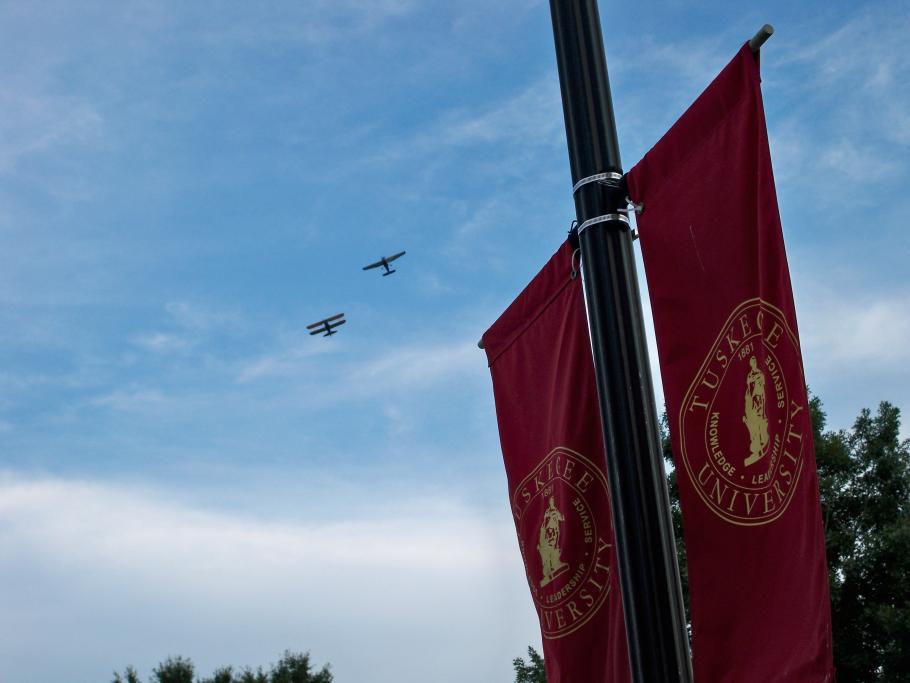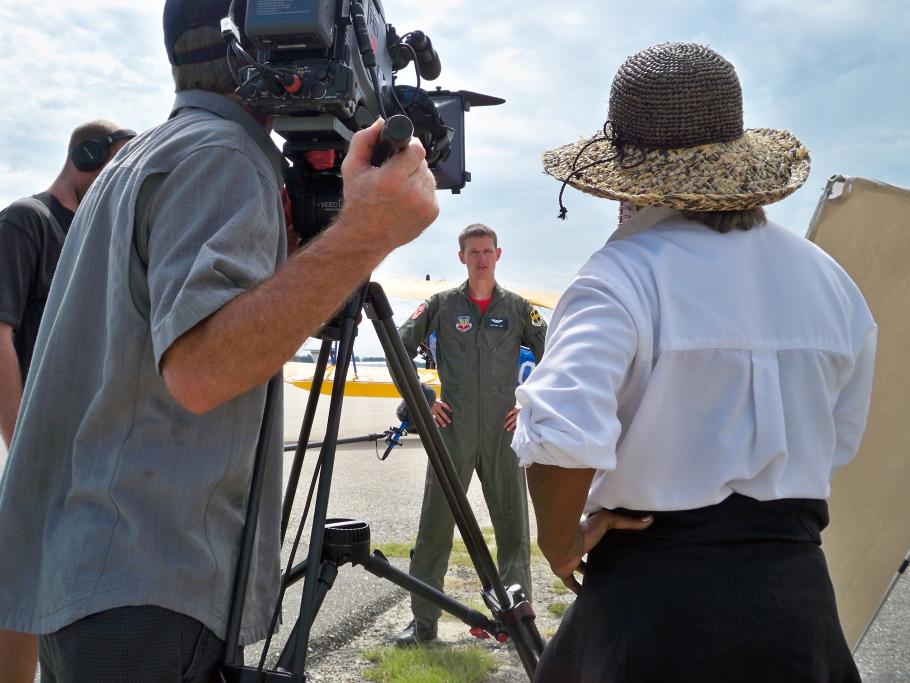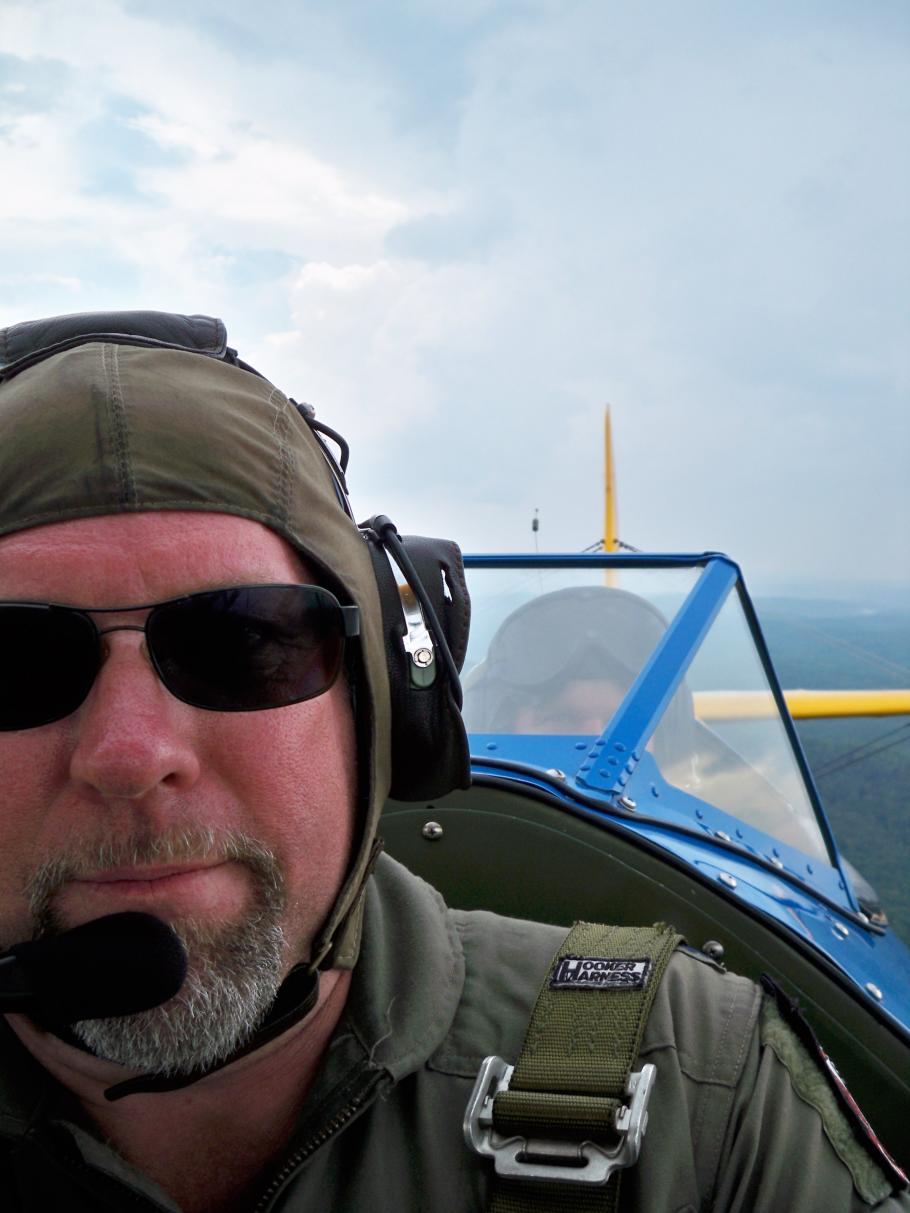This post is a follow up to Tuskegee Bird Flies North. ...So I was on the phone Monday evening and my wife asked me, "Well, what did you do today?" With subtle nonchalance I said, "Well, I strapped into the front seat of Matt's Stearman, ya know, the one that was flown by the Tuskegee Airmen during World War II, and flew over Appomattox Court House, ya know, where Gen. Robert E. Lee surrendered his Army to Gen. Ulysses S. Grant effectively ending the American Civil War and then we headed north so he could turn it over to the National Museum of African American History and Culture to be preserved for all time...just your normal curatorial work day Honey..."
To say that the last three days in the air were, as my kids put it, "ridiculous!" or "sick!", cannot possible describe the deep emotions, the multiple flashbacks to my previous Air Force piloting life, the liberating freedom of flying in an open-cockpit biplane, or simply the rich thrill of being back in the air again as a pilot after USAF retirement more than a decade ago. I felt like a 25-year-old again. I kid you not! But, from the curatorial side, the past few days have given me a perspective on the experiences of the Tuskegee Airmen during WW II that I previously had only read about, and I am grateful for such an opportunity.
Flying two or three times a day in the unbearable Alabama heat in a heavy canvas (today Nomex) flight suit is more than physically demanding, it requires constant vigilance to hydration, concentration and preparation to ensure safe flight operations and development in the air. Those Airmen that tolerated the heat of the Alabama sun and the pressure of a segregated society are even more remarkable to me now than they were last week. They are true American heroes, each and every one.
Eight hops and 11 flying hours after our departure from Moton Field, Tuskegee, Alabama, Captain Matt Quy (pronounced Kwhy) and I touched down at Andrews AFB where the Stearman will rest for a few days before joining the Smithsonian's collection on Friday at the Steven F. Udvar-Hazy Center. The Stearman will be displayed there in the near future until the NMAAHC begins to install its exhibits in preparation for opening on the Mall in 2015.
This is my story of that three day trip--one I will never forget and will always appreciate!
I had arrived in Tuskegee on Saturday evening and met up with Matt “Happy” Quy at the Kellogg Hotel on the grounds of the Tuskegee Institute. Matt had been at Moton Field flying a photo shoot over the Institute. I heard the Stearman fly past and immediately ran out to see it aloft in the same piece of sky that had been its working home more than six decades ago. That was when I realized that very soon I would be flying in that very plane — flown by young African-American pilots training to fight in a war in the air above Nazi territory — a war where they would fly and fight next to Army Air Forces bombers and their crews but not be permitted to eat in the same tent as those they defended. Matt and those who had been involved in the day’s activities all joined up to enjoy some dinner and music provided by a great band named Desire. An upbeat mood was set for the next day.
It was a sweltering Sunday morning— 90 degrees by 8:00 a.m., sunny and humid. It took all of 15 seconds to break into a profuse sweat. My flight suit was soaked before one-half an hour had passed. Matt was baking in the sun completing a few interviews for Smithsonian media and by noon we were ready to “pull the prop” and crank. Prior to starting the engine, it helps lubrication to pull the propeller through about six times to move the pistons and pump the fluids through the engine making it easier to start it up.
After a few more photos, including the obligatory flight crew and plane shot (also known as the “hero picture”) we strapped in and then Matt cranked up the engine, and it started the very first try — and it did so every time during the trip.
After checking the radios and our cockpit intercom, Matt taxied to the active runway for takeoff. The Stearman is a tail dragger and I never quite got used to the two-part takeoff run. After a warm-up and engine instrument check in the hammerhead (the open spot prior to the active runway), Matt moved into position and ran the throttle to full. Although it was incredibly hot, the big fan really kept things cool in the cockpit. The excitement of the takeoff roll made me forget the sweat anyway. It only took about 30 meters (100 feet) before the tail lifted off the runway placing us in a more natural flying position. About 60 meters (200 feet) later we jumped into the air and quickly accelerated to about 100 knots for the climb to our cruising altitude—about 305 meters (1,000 feet) above the ground.
The wind was a combination of the prop and the ambient air blowing by the cockpit. The small windscreen is more than adequate to deflect the oncoming breeze over the front cockpit so that no direct 90-100 knot winds can be felt unless you hang your hand outside of the windscreen frame. I thought that in flight the noise level would be much greater. But with the sound reducing headset, there is only the low-frequency purr of the engine. Even without the headset, the noise is not nearly as loud as I thought it would be. I was comforted by the engine vibration at cruise settings—a constant hum that is as soothing to the crew as a mother’s heartbeat is to an infant. The best way I can think of to describe the sensations while in flight is like this:
Imagine being seated in a 1965 Mustang convertible automobile—sporty, in a classic way. Now imagine that you are driving that car 95 miles per hour with the top down on a gravel road…that’s about how it feels and smells (except for the dust).
The Stearman pilot/instructor sits in the rear cockpit while the passenger/trainee sits up front. Dik and Matt are cruising toward their first destination.
Flight Log:
| Sunday, 31 July | ||
| Moton Field to Covington Muni, GA | 1:47 | |
| Covington, GA to Toccoa, GA | 1:00 | |
| Via Currahee Mountain | ||
| Toccoa, GA to Shelby, NC | 1:45 | |
| Monday, 1 August | ||
| Shelby, NC to Blue Ridge Airport, Martinsville, VA | 1:43 | |
| Martinsville, VA to Orange, VA | ||
| Via Appomattox Courthouse | 2:00 | |
| Tuesday, 2 August | ||
| Orange, VA (Local Hop) | 0:55 | |
| Orange, VA to Manassas, VA | 1:00 | |
| Manassas, VA to Andrews AFB, MD | 0:50 | |




